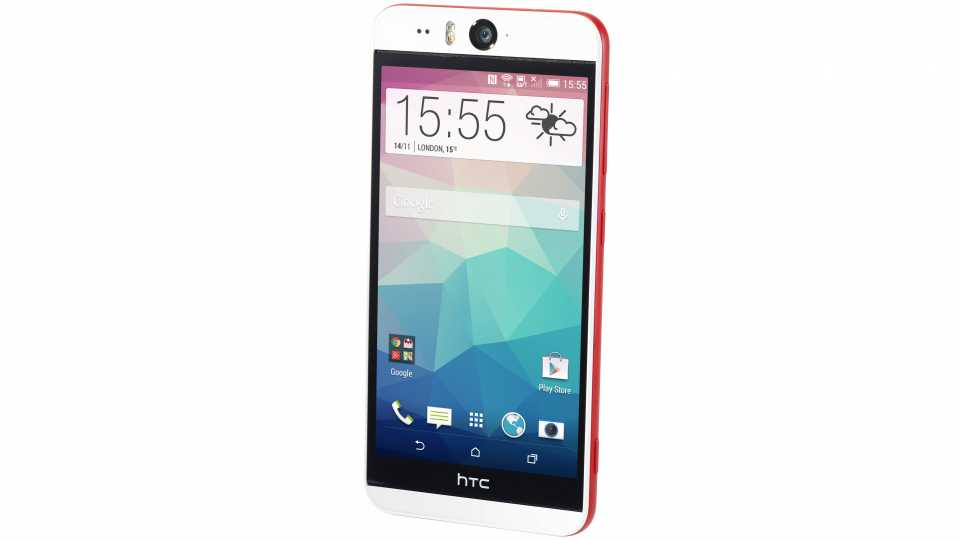The Desire Eye is one of HTC's most unusual smartphones to date. With a 13-megapixel camera and dual LED flash on both the front and back of the handset, it's primed and ready for both photography and selfie fans alike, while its quick internals give it as much speed and processing power as the flagship HTC One m8 . It's also incredibly well-made, with a bright, dual-colour unibody design and IPX7 waterproofing down to one metre, so you never need to worry about it breaking during a heavy rain shower or dropping it down the loo.
We particularly like how there are hardly any breaks in the chassis, as HTC has injected the Desire Eye's respective colours straight into its soft-touch surround. This allows for a near-seamless finish all the way round, while the slim 8.5mm profile and rounded corners are extremely comfortable to hold. We actually greatly prefer it to the One m8, as the extra dash of colour not only adds a bit of extra flare and personality to the handset, but the soft-touch rear also provides plenty of grip.

DUAL CAMERAS
If you really want to take your selfie photography to the next level, the HTC Desire Eye is the phone to buy. With 13-megapixel cameras on both the front and back of the handset and plenty of picture modes to choose from, the Desire Eye puts other so-called selfie phones such as the Nokia Lumia 735 to shame, providing much more detailed front-facing photos than any other smartphone we've tested.
The front camera had a tendency to over-expose bright sources of light, such as overhead office lights, but on the whole we were impressed with the level of detail on show and its accurate colour reproduction. If you'd rather not reach for the dedicated shutter button, you can also set the phone to take selfies automatically or by using your voice, which it will do instantly as soon as it senses a face in its viewfinder.
However, despite having a wider 22mm lens than the rear camera's 28mm lens, we found the front camera had trouble focusing correctly if we held it too close to our face. The Split Capture mode, which uses both cameras at the same time, regularly captures more detailed and crisp images with the rear sensor than the front when held at a normal, relaxed arm’s distance away.
^ You too can take simultaneous double selfies with the HTC Desire Eye
This may be due to the live 'beauty' slider that smoothes out unwanted blemishes, but even turning this off still produced slightly soft-looking portraits. Fortunately, we did manage to improve the sharpness of our photos by holding the camera slightly further away from us, but it's a shame you have to stretch your arm out to get a well-defined picture.
The rear-camera was much better. In sunny weather, our photos were lovely and bright, and there was plenty of detail on show with hardly any noise whatsoever. It struggled to expose the sky correctly in more overcast conditions, but we still managed to get rich, vivid-looking shots once we'd tapped the right focus point onscreen. Enabling HDR mode also helped.
We were pleased with how it handled indoor photography as well. It managed to pick up all the different textures in our still life arrangement and the amount of contrast on show was excellent, showing lighter and darker parts of the photo hardly any obvious patches of noise.

